Most homeowners have a selection of tools that may be used for mowing the lawn, planting trees, and other aspects of their work outdoors. Tools like shovels are necessities for any home.
But when it comes down to the nitty-gritty, different activities and projects call for different kinds of shovels.
A digging shovel, an edge shovel, a handheld shovel, a root shovel, a flat shovel, a post hole shovel, and a snow shovel are just a few options for landscaping and yard maintenance.
But what kind of shovel would be best for you? Use our shovel guidelines as a starting point for researching and identifying the best shovels for your needs.
Table of Contents
13 Types of Shovels
| Type | Usage |
| Pointed Digging Shovel | Digging through dry, hard, or even stony soil. |
| Round Digging Shovel | Digging in loose soil. |
| Flat Shovel | Lifting and scooping. |
| Scoop Shovel | Lifting and scooping – with a wider blade than a flat shovel. |
| Trench Shovel | Digging a small to medium trench. |
| Edging Shovel | Creating and maintaining garden edges. |
| Handheld shovels | Precise work. |
| Tree-Planting Shovel | Planting trees. |
| Root Shovel | Removing small trees or bushes. |
| Post Hole Shovel | Creating holes for placing fence posts. |
| Snow Shovel | Scooping up snow. |
| Power Shovel | Breaking up compacted snow or ground. |
| Folding Shovel | Portable shovel. |
Our Top 3 Recommendations for Your Must-Have Shovel Collection
- Pointed Digging Shovel
- Handheld Shovel
- Scoop Shovel
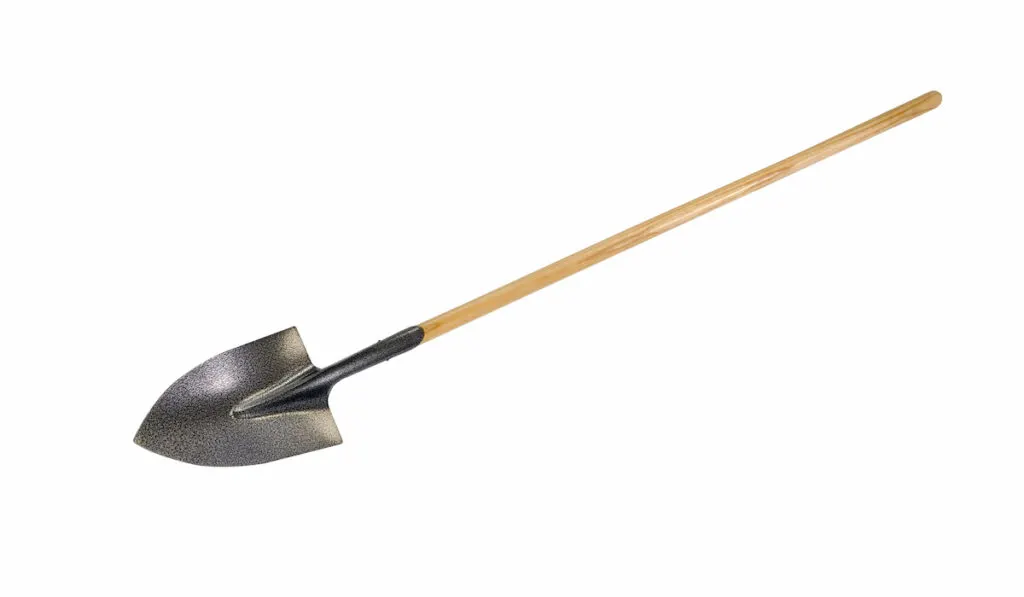
1. Pointed Digging Shovel
A shovel’s most fundamental function is, of course, digging.
If you need to dig through densely compacted, dry, hard, or even stony soil, a pointed digging shovel is your best bet.
There is a sharp point at the tip of this shovel’s blade, and the edges are curled ever-so-slightly upward.
The combination of these two characteristics makes for a tool that is excellent at digging and capable of shoveling the soil it has excavated.
You can find pointed digging shovels with a wooden or metal shaft and a broad footplate. The footplate allows you to put down your body weight to break through soil that might be too hard to work with for a standard shovel.
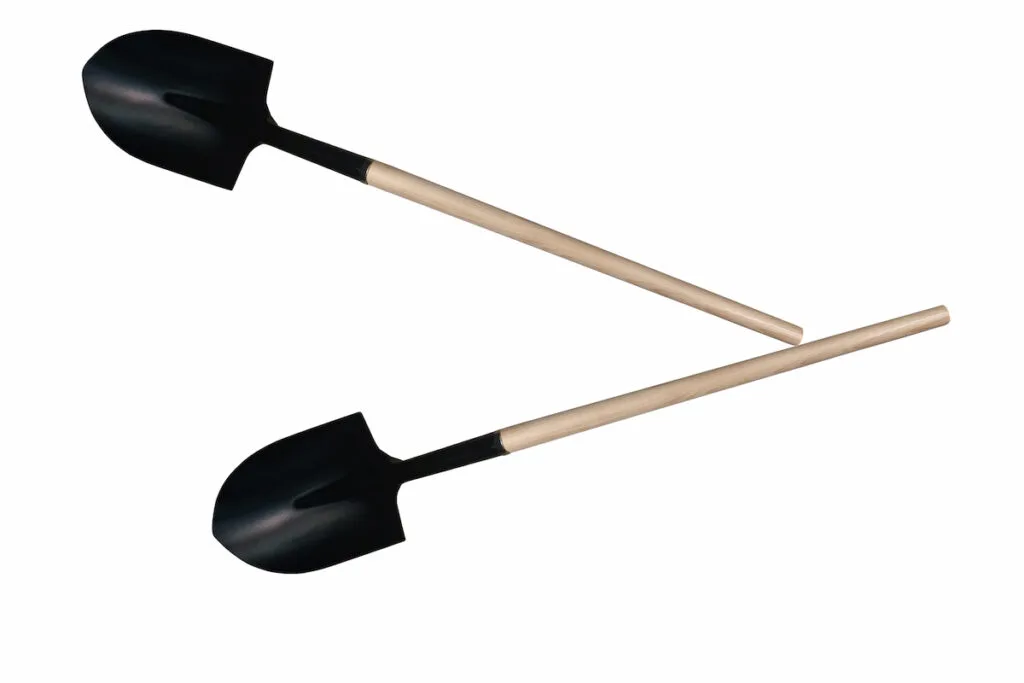
2. Round Digging Shovel
When working with softer, looser dirt, a round digger shovel is the tool of choice.
The round digging shovel looks similar to a pointed digging shovel. However, the blade tip is rounded and domed instead of pointed and sharp.
The rounded end of this shovel makes it great for transplanting flowers or crops in the garden without damaging the plants’ root systems.
If the soil is very thick, rocky, or resistant, a round digging shovel may have trouble breaking through, and you may need to switch to a pointed digging shovel instead.

3. Flat Shovel
The standard shovel that most people are familiar with is the flat shovel. Despite common assumptions, this kind of shovel is better suited for lifting and transporting than digging.
A flat shovel is a tool for moving soil, sand, gravel, or dirt to a wheelbarrow for transport.
These shovels are built to last and can be rather heavy. This is the sort of shovel you need if you want something that won’t break under pressure and can be counted on to perform the lifting job.
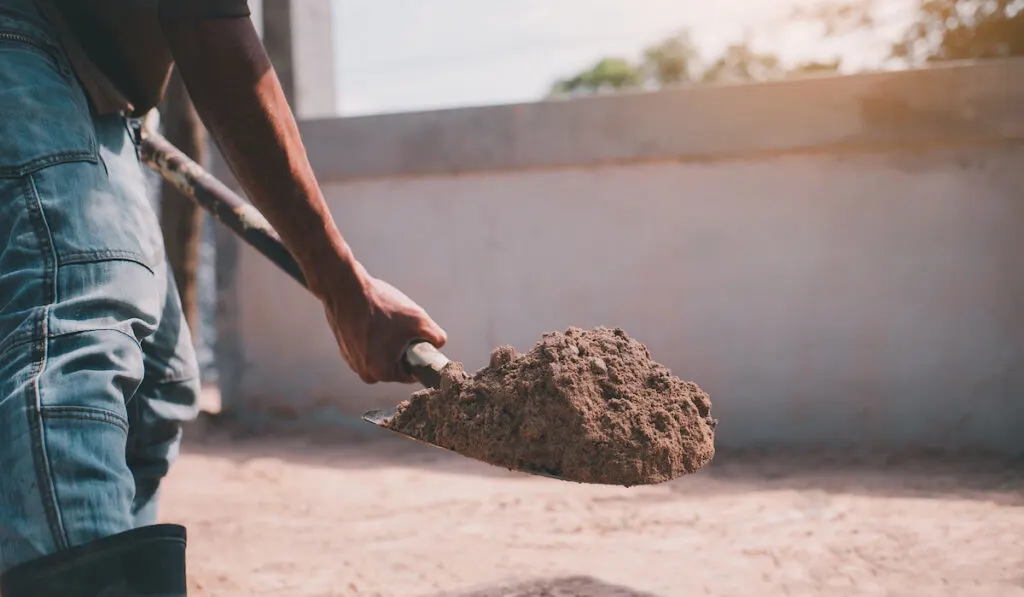
4. Scoop Shovel
The blade of a scoop shovel is significantly larger than that of a standard shovel. The tip of the blade is typically flat, though it can be rounded in some cases.
Scoop shovels are designed with a hard, scooped form and side edges to contain the material being moved.
Those shovels can be produced from a range of materials. Aluminum models, for example, have a shorter life span than metal ones, but they are lighter and easier to work with, making it much simpler to move big loads.
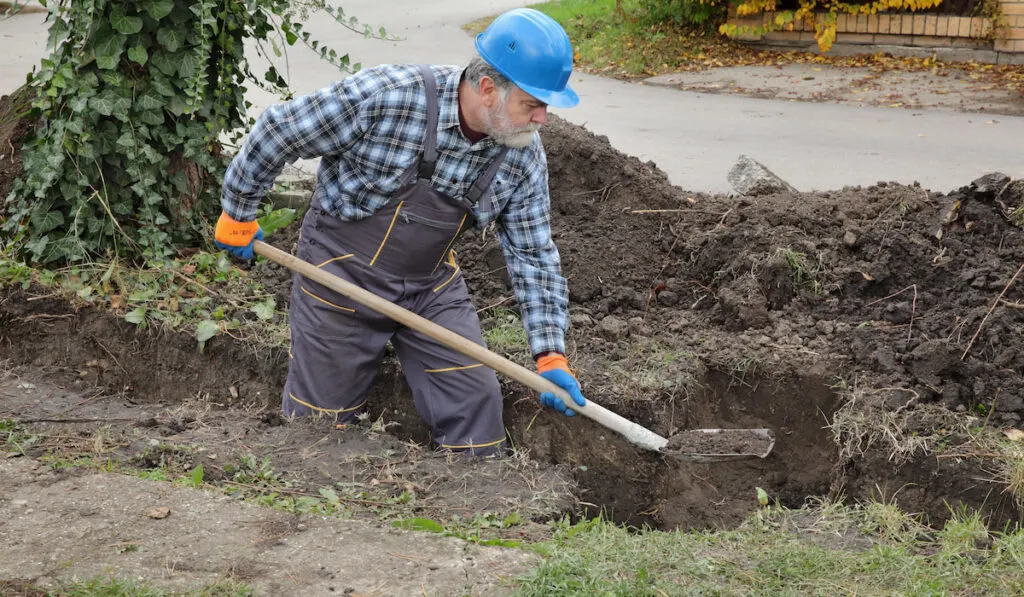
5. Trench Shovel
Trench shovels can either be used to dig a small to medium trench or, after a deeper trench has been dug with a more robust tool, they can be used to tidy it up.
A trench shovel’s blade is typically narrow, with a sharp tip at the end.
There isn’t much room for your foot on the shovel blade, making it difficult to dig the tool firmly into the soil. This makes digging anything bigger than a few holes a laborious and time-consuming task.

6. Edging Shovel
If you want straight, neat lines around the edge of your garden, you’ll need an edging shovel. You can distinguish this shovel from others because of its distinctive half-moon-shaped blade.
The edge spade has a straight footplate, so you can put your foot down and use your body weight for more pressure, and the sharp tip of the rounded blade helps in the process.
An edging shovel’s blade is narrow and flat for easy movement along surfaces, including paths, flower beds, fences, and other areas that require a clean, precise edge.
In addition to their principal use—the creation and maintenance of a garden’s edge—these are also useful for other tasks, such as breaking up clumps of soil or aerating the soil around plant roots.
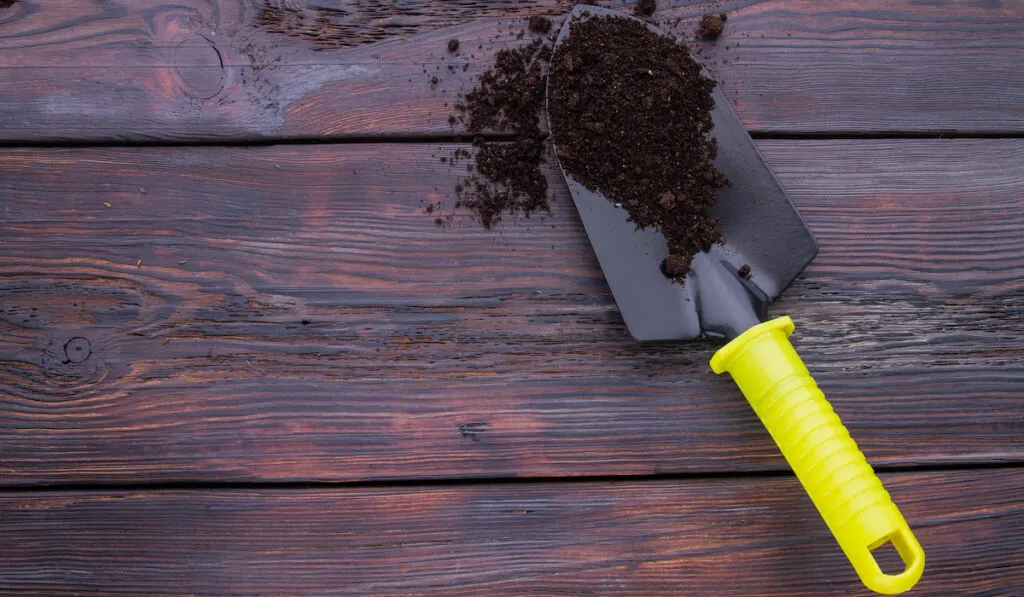
7. Handheld Shovel
Handheld shovels are also known as hand shovels, garden trowels, and hand trowels.
These are basically little shovels with small shafts that are roughly six inches long and can be used for several gardening activities, such as digging up weeds, transplanting plants, or planting flowers in a pot.
A handheld shovel gives you much greater control in the garden, allowing for more precise work in tight spaces like flower beds.
There is a wide range of sizes and styles among these little shovels, but the vast majority have a blade no more than a few inches wide and either a rounded or pointed tip.
A handheld shovel’s blade is typically slightly rounded for improved scooping.
As an added bonus, they are not too heavy to handle, so it’s easier to cover more ground without tiring out your arms.
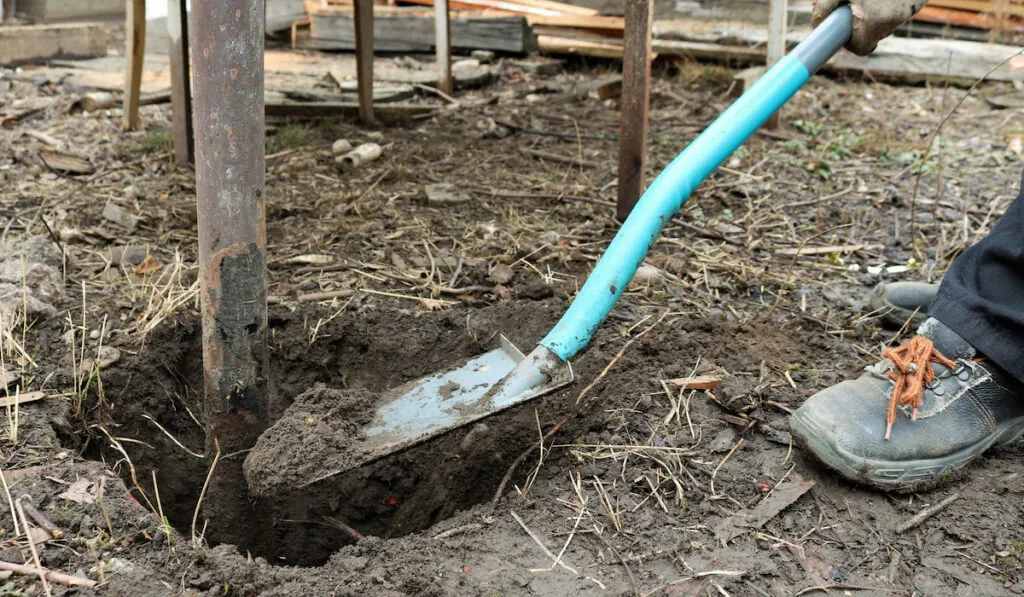
8. Tree-Planting Shovel
These shovels make short work of the hard job of planting trees, which would take hours with a regular shovel.
The narrow blade of the tree-planting shovel tapers to a rounded or pointed end. Thanks to the profiled, narrow shovel blade, it is possible to make holes of various sizes, particularly in a round shape.
While selecting a tree-planting shovel, consider the shaft length. A longer one is preferable on flat, even ground, whereas a shorter shaft is more effective on hills and slopes.
9. Root Shovel
Although root shovels come in a wide variety of forms, most of them have long, narrow triangular blades with either pointy or flattened tips.
In order to slice through the roots of plants, the root shovel blade’s sides are usually serrated.
This is because root shovels are designed to remove thicker, more tenacious roots that can be difficult to remove with a normal edging hand shovel.

10. Post Hole Shovel
The post-hole digger consists of two interconnected blades that are narrow, long, and curved inward.
The blades of the shovel are sharpened to easily slice through tough materials like roots.
This shovel’s principal function is to create holes for placing fence posts. Closely spaced blades on this shovel create a cylindrical hole when driven into the soil.

11. Power Shovel
Shovels are typically considered hand tools, but engine-powered or electric shovels are also available.
This category includes power shovels, which are superior in situations where hand shovels are too difficult to use.
You may compare a power shovel to a hybrid of a snow blower and a shovel.
A power shovel’s motor-driven blades quickly and efficiently clear walkways and driveways of snow.
Some power shovels include blades that can burrow into the soil, making them ideal for breaking up compacted ground.
If you need to dig through frozen snow or hard soil but would rather not use your hands, a power shovel is your best bet.

12. Snow Shovel
Large snowdrifts are an eyesore in the winter, so a snow shovel is a must if your driveway ever gets snow.
The lengthy shafts of these tools can be produced using various materials, such as wood, metal, or more expensive fiberglass.
The blade of a snow shovel is long and rectangular, with a slight upward bend. This design allows you to easily scoop snow off the driveway or porch and toss it into the yard.
The bottom of most snow shovels comes with a metal edge that is helpful for chipping away at both snow and ice pieces that have frozen to the ground.

13. Folding Shovel
A folding shovel is, simply speaking, a portable shovel. These compact shovels fold in half for storage or transportation.
Their smaller size makes them ideal for backpacking, camping, as well as other outdoor activities, and they are also a good idea to keep in the car in case of an emergency.
Parts of a Shovel
Each shovel consists of several basic parts, and its construction, although it seems trivial, is worth getting to know if you need to choose the perfect tool for yourself.
Every part of the shovel is designed to perform a particular function.
Spending a little more on a good blade or a shaft that’s the ideal length and has a comfortable profile can be well worth it.
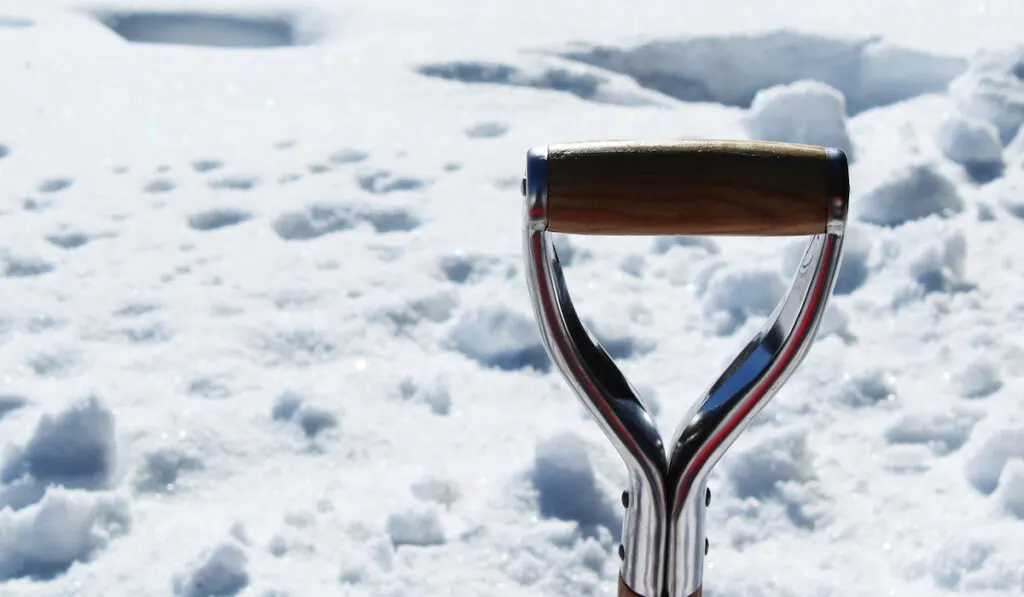
1. Grip Handle
The shovel’s highest piece is the grip handle, which is where your hands will rest.
Most shovel handles are designed in the shape of a D. They have a bar straight across the top plus a curved edge along the bottom, with sufficient room in the center for your hand to fit through.
The shovel’s grip handle can be plastic, wood, or metal; however, in various cases, there might not be any grip handle at all.
The shovel’s handle is an often-overlooked feature that can significantly impact the user’s experience.

2. Shaft
A shovel’s shaft is simply the long part that connects the handle to the shovel’s blade.
The effectiveness of a shovel can be determined by factors such as the shaft’s length and the material from which it is made.
The strongest and most durable shafts are made of fiberglass and metal, but they also cost the most.
Shafts made of wood might be very strong and resilient if treated properly and stored indoors when not in use.
If you put too much pressure on them, they may break, yet they are a favorite among eco-conscious consumers.
A comfortable shovel handle length is tailored to the user’s height. If you’re in the market for a new shovel, keep this in mind.
While most shovels have straight shafts, there are curved-shaft variants that are more ergonomic and comfortable to use.
3. Footplate
Shovels with footplates provide a surface on which the user can rest their foot and apply pressure while digging.
A footplate is a common feature of digging shovels, where the user’s body weight is necessary for making a hole easier.
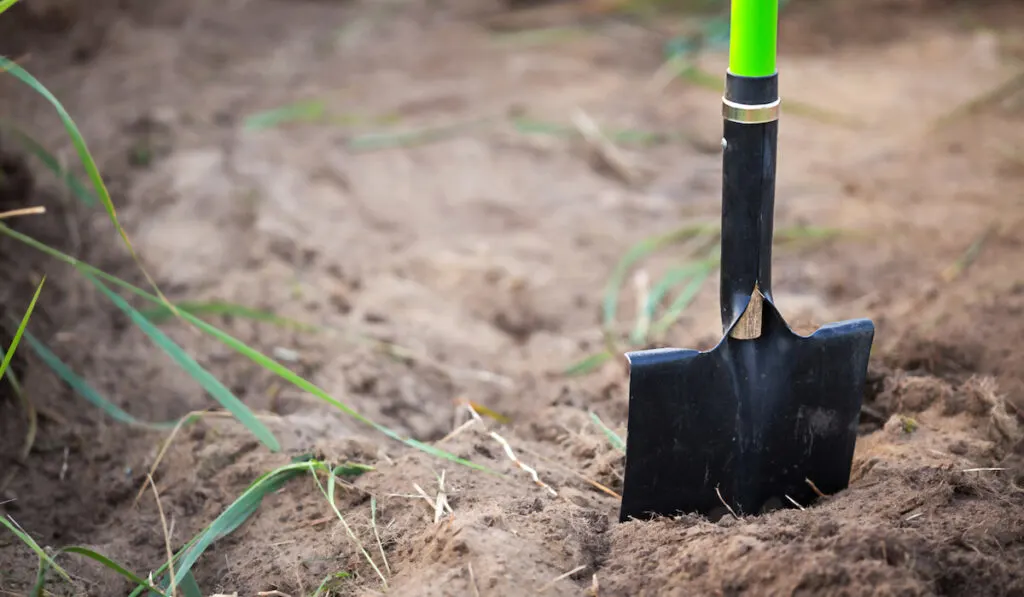
4. Collar
The shovel’s collar is also called the tool’s socket. This is the piece of the shovel that joins the shaft and the blade.
The collar is typically composed of metal because of its durability requirements under heavy loads.
5. Blade
The shovel’s blade is the component that actually touches the ground when the tool is used.
Metal or aluminum are the typical materials, though fiberglass or plastic are also common.

6. Tip
The shovel’s tip is the blade’s lowest point. The shape of a shovel varies according to its use.
Scooping and shifting shovels require flat points, while digging requires mostly pointy or rounded ones.
Final Thoughts
Shovels are helpful for more than just digging holes; they are extremely useful gardening tools. Some are made for one task in particular, while others are versatile and can be used in various settings.
Choosing the wrong shovel could make digging more difficult or even impossible, not to mention more time-consuming.
To choose the best shovel for your needs, it is important to go over this article and learn about the various options available to you.
Having a couple of different kinds of shovels on hand is a smart idea if you want to be prepared for any future projects that may come your way.
Resources
- https://backyardscape.com/types-of-shovels/
- https://www.electronicshub.org/types-of-shovels/
- https://www.homestratosphere.com/types-of-shovels/
- https://www.trees.com/gardening-and-landscaping/types-of-shovels
- https://civiconcepts.com/blog/types-of-shovels
